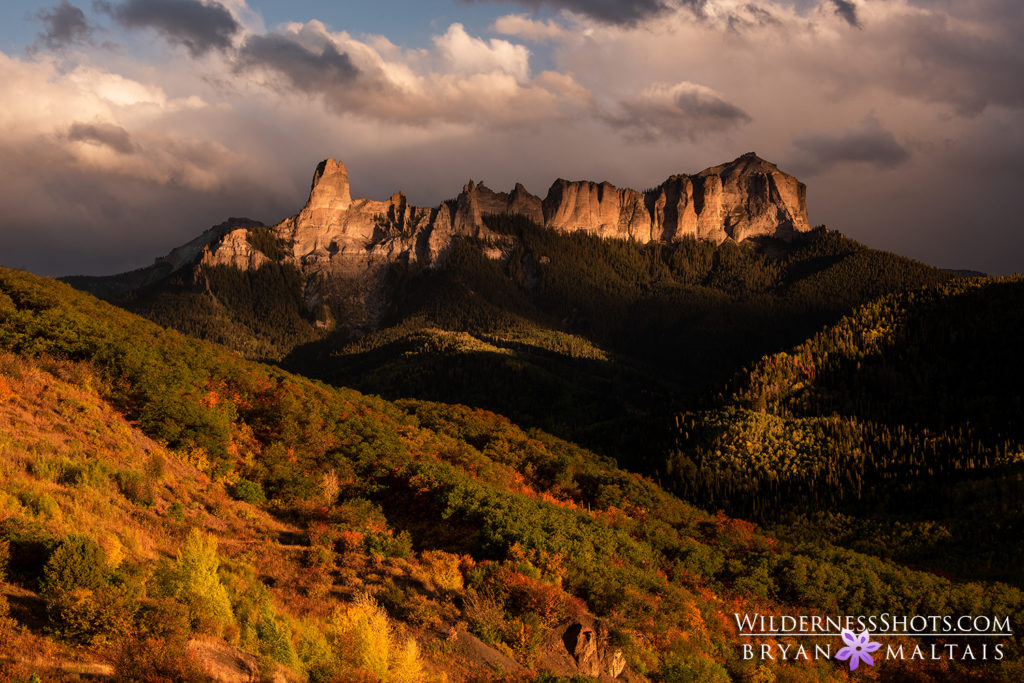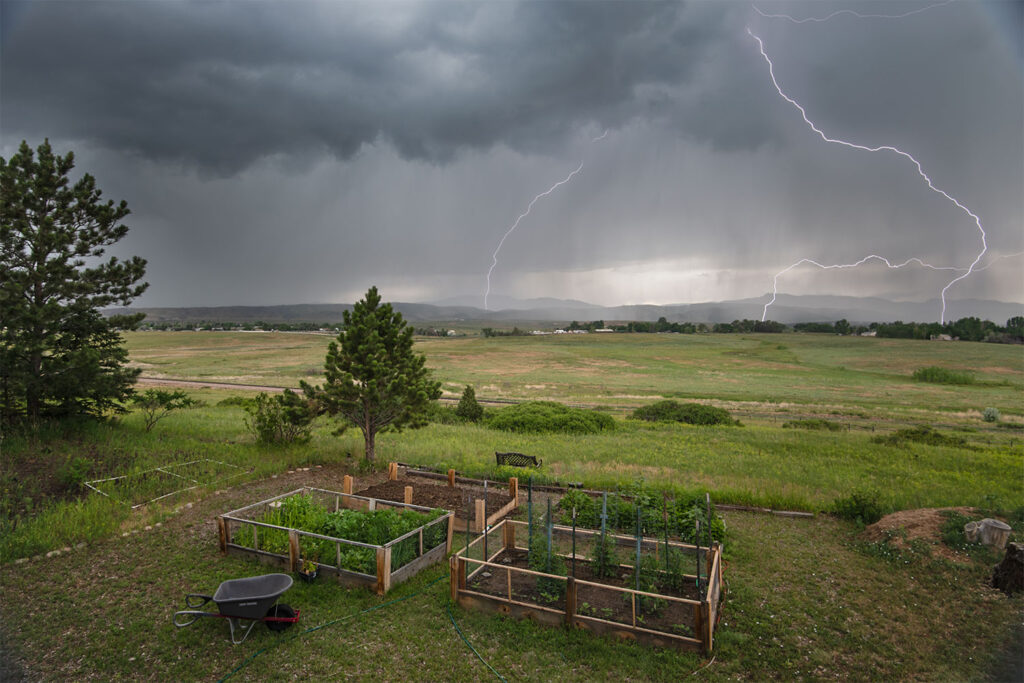
Dynamically structured clouds and high quality natural light are pivotal to nature photography. Great light can distinguish between a mediocre photo and work of art. In addition to their inherent beauty, clouds are essential to catch the sunlight’s color and modify how it illuminates our subjects. This interplay between clouds and light makes them inexorably connected to help you create stunning photos. And while they’re both the harbingers of beauty, one’s absence can prevent capturing a great photo.
Clouds
It takes a good cloudscape to make a good landscape. When including the sky in a daytime composition, clouds fill an otherwise boring void in the upper frame. While it’s possible to capture a beautiful composition without clouds, that’s not the norm. When there are fluffy white clouds or ominous storm clouds rolling in, suddenly the sky becomes a dynamic element with drama and depth.
Clouds are more than just intrinsically beautiful; they also serve as a canvas for light and color. Fiery sunsets wouldn’t happen without clouds. Crepuscular rays, aka “God rays,” are formed when the sun shines down through cracks in a cloud ceiling. Dappled light occurs when sunlight shines past scattered clouds and casts spots of light and shadow on the landscape. Clouds also provide the chance to use neutral density filters to create fun compositions with blurred clouds streaking across the sky.
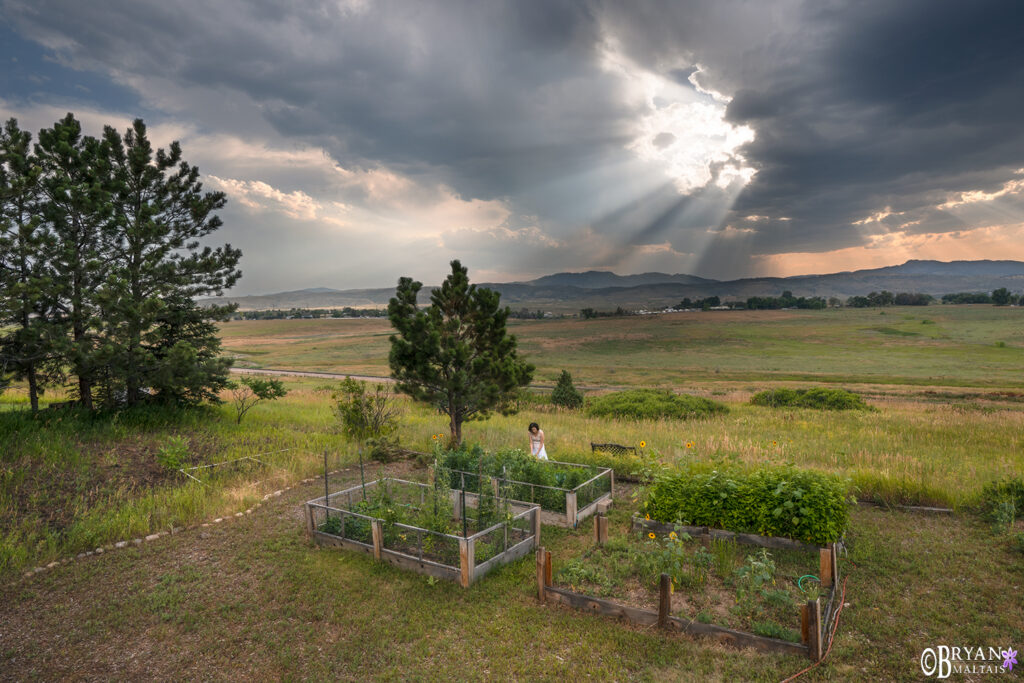 The interplay of clouds and sunlight created these gorgeous God rays. Without the clouds, this afternoon light might have been too harsh and unattractive
The interplay of clouds and sunlight created these gorgeous God rays. Without the clouds, this afternoon light might have been too harsh and unattractive
Going the extra mile to capture beautiful clouds can differentiate an average photo from a great one. I’ve returned to spots year after year before finally capturing them with nice clouds. Sometimes I spend days on location waiting for nice clouds to appear. While non-photographers wonder why we stand behind our tripods for hours to take a single photo, it’s often because we’re waiting for the ideal clouds to materialize and catch the light. Capturing good clouds is one of the biggest challenges in landscape photography because we’re at their mercy.
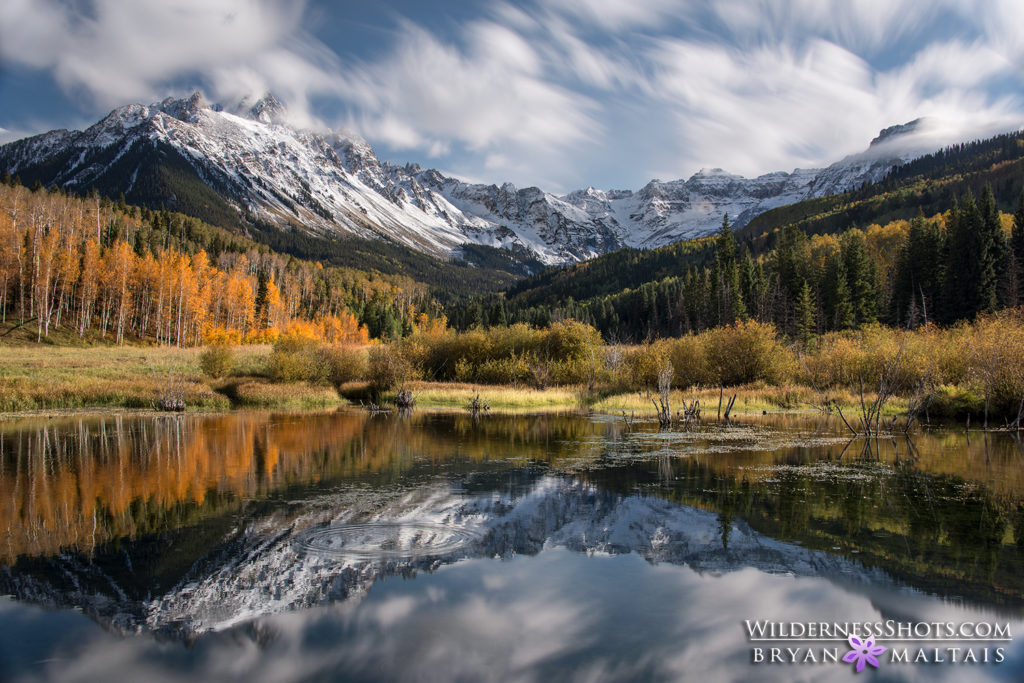 These clouds were swirling in opposite directions, giving me the chance to use my neutral density filter to capture their wild movement. Without clouds this would have been a mediocre shot with boring light.
These clouds were swirling in opposite directions, giving me the chance to use my neutral density filter to capture their wild movement. Without clouds this would have been a mediocre shot with boring light.
On a trip many years ago in the Weminuche Wilderness of Colorado, I saw some gorgeous storm clouds brewing over the Grenadier Mountains. Their dramatic presence was like a dragon challenging me to capture their power through my lens. However, in order to get the shot I so wanted, I’d have to venture above tree line. But as any experienced mountaineer knows, you don’t go above treeline in the afternoon for fear of lightning, even when there’s no thunderstorm. Despite the danger, I couldn’t resist the pull of those majestic clouds. Sure enough, when I ascended above tree line, the thunderstorm moved above me. As lightning struck around me, I felt a tingling in the metal button on my cap, a sign that I was about to be struck. With my heart racing, I hit the ground and kissed my butt goodbye. A bolt struck near me with a deafening crack, but I was spared!
Light
Photography would be a breeze if subjects looked equally stunning under any type of light. Specific kinds of light hold the power to evoke distinct moods depending on thier tone and angle. High quality light can turn an average shot into a masterpiece, so it’s crucial to understand how to recognize the different types of natural light and capture it effectively.
Golden Hour
Golden hour happens shortly after sunrise and before sunset when the light has a warm, golden hue. This occurs because the sun is low on the horizon, causing the light to pass through more of the earth’s atmosphere. As it travels through the atmosphere, the blue wavelength gets filtered out, leaving only red and orange tones. The light at this time is also pleasantly diffused, which creates long, soft-edged shadows.
The light of golden hour is so saturated and radiant that the light itself almost becomes the subject. Its golden light oozes over the landscape like honey and has the power to make an otherwise unremarkable scene, sublime. Though golden hour is most associated with landscape photography, it can make any genre look spectacular if harnessed, particularly wildlife and macro.
Capturing golden hour takes effort, especially at sunrise. It often means rising very early and hiking to your destination in the cold and dark. This effort is often what distinguishes lackluster midday photos from golden master pieces.
I took this shot several years in a row, but each time only captured either good clouds or golden hour light, but never both together. Finally the two congealed for this nice portfolio shot.
Afterglow
Afterglow is an extension of golden hour that occurs when the sun has gone below the horizon, but its rays continue to illuminate the clouds in the upper atmosphere. During afterglow, the landscape has already fallen into shadows because the sun is set, but the clouds burn with deeply saturated warm, glowing colors.
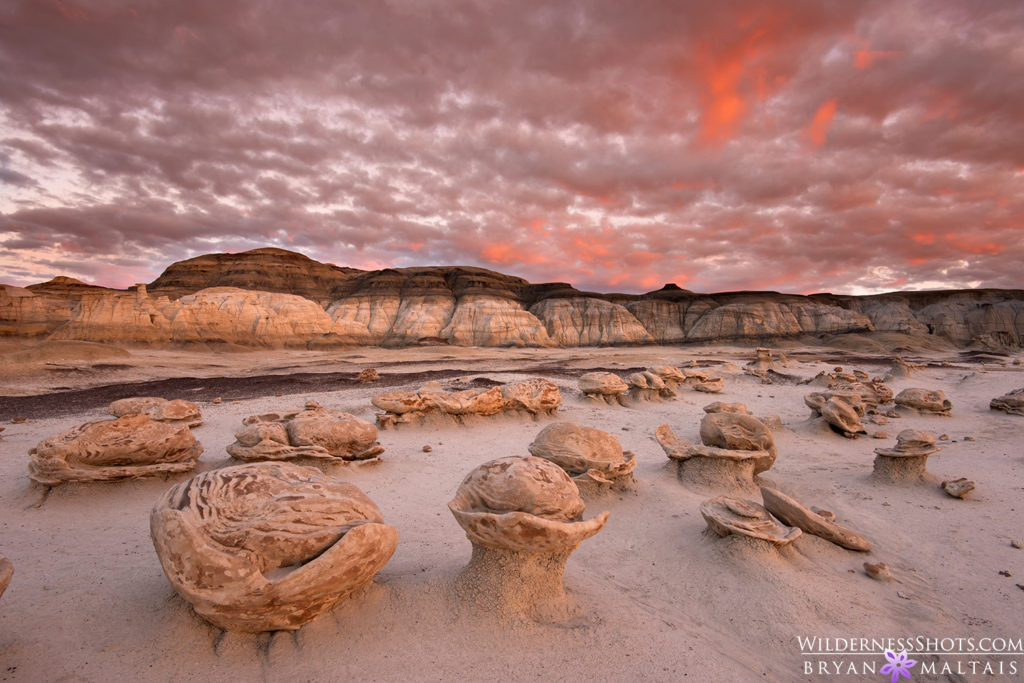 Afterglow is a coveted effect and only happens when conditions are right. Clouds must be present, but not so many that they block the western horizon where the sun has just set. As the sun continues to fall below the horizon, the band of color that it projects on the clouds slowly moves from low to high. As it moves higher, its hue transitions from golden to pinkish. The same phenomenon that occurs before sunrise is known as preglow.
Afterglow is a coveted effect and only happens when conditions are right. Clouds must be present, but not so many that they block the western horizon where the sun has just set. As the sun continues to fall below the horizon, the band of color that it projects on the clouds slowly moves from low to high. As it moves higher, its hue transitions from golden to pinkish. The same phenomenon that occurs before sunrise is known as preglow.
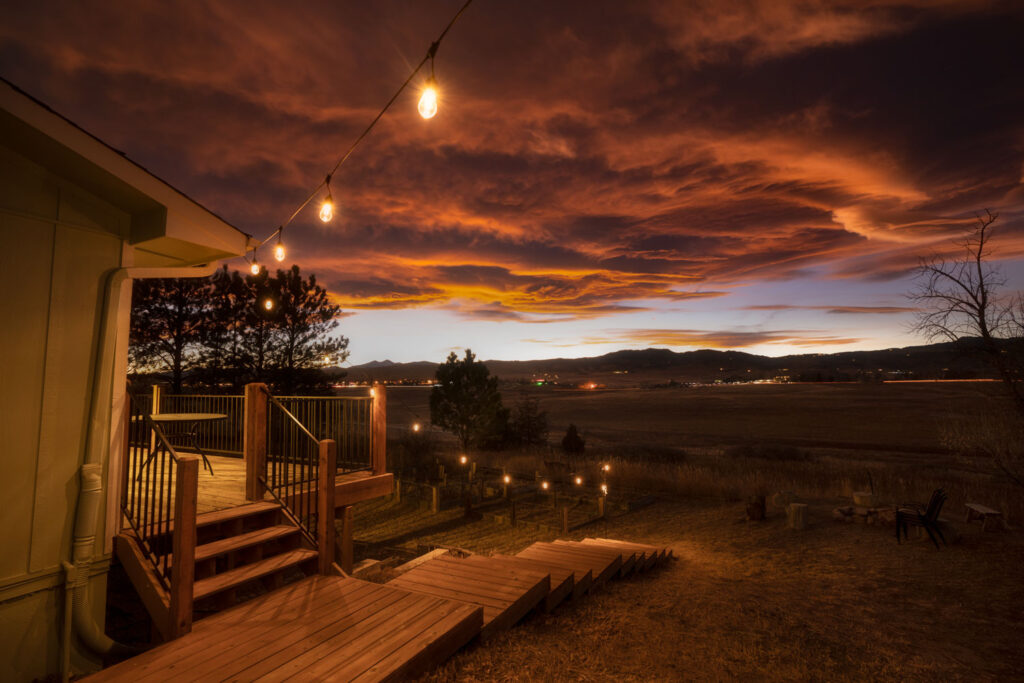 The westerly view off my back deck looks out over the Fort Collins foothills, which lets me observe nightly sunsets. Skies resembling smoldering infernos from afterglow are seldom, sometimes occurring less than every month. When they do, it beckons my neighbors into the cul-de-sac to marvel at the spectacle. This experience makes me savor even more when I’m fortunate enough to capture a spectacular afterglow in the field.
The westerly view off my back deck looks out over the Fort Collins foothills, which lets me observe nightly sunsets. Skies resembling smoldering infernos from afterglow are seldom, sometimes occurring less than every month. When they do, it beckons my neighbors into the cul-de-sac to marvel at the spectacle. This experience makes me savor even more when I’m fortunate enough to capture a spectacular afterglow in the field.
Mid-day Light
Mid-day light occurs between late morning and late afternoon (depending on day length). Its tone is white without the warmth of golden hour, making subjects look washed-out. The sun’s high position creates dark shadows with hard edges that point downwards. This contrast between dark shadows and bright areas obscures details, similar to when a person is wearing a ball cap at noon with their face hidden in a black shadow while the rest of them is bright.
Typically, photos taken under direct, mid-day light are mediocre or even unattractive. That’s fine if you’re just practicing or documenting a place, but it’s unlikely to produce a stunning portfolio shot. Of course, there are exceptions. Dramatic weather conditions like nice clouds or an ominous storm can make for breathtaking photo opportunities no matter the time of day.
When this electrifying storm suddenly moved in it turned the boring white light of mid-afternoon into a thrilling motif worthy of dropping what i was doing
Diffused Light
Diffused light occurs when light passes through a translucent medium, resulting in soft, even illumination. The most common source of diffused light in nature is an overcast sky when sunlight filters through the clouds. Other examples include sunlight filtering through a forest canopy, and using a flash with a diffuser.
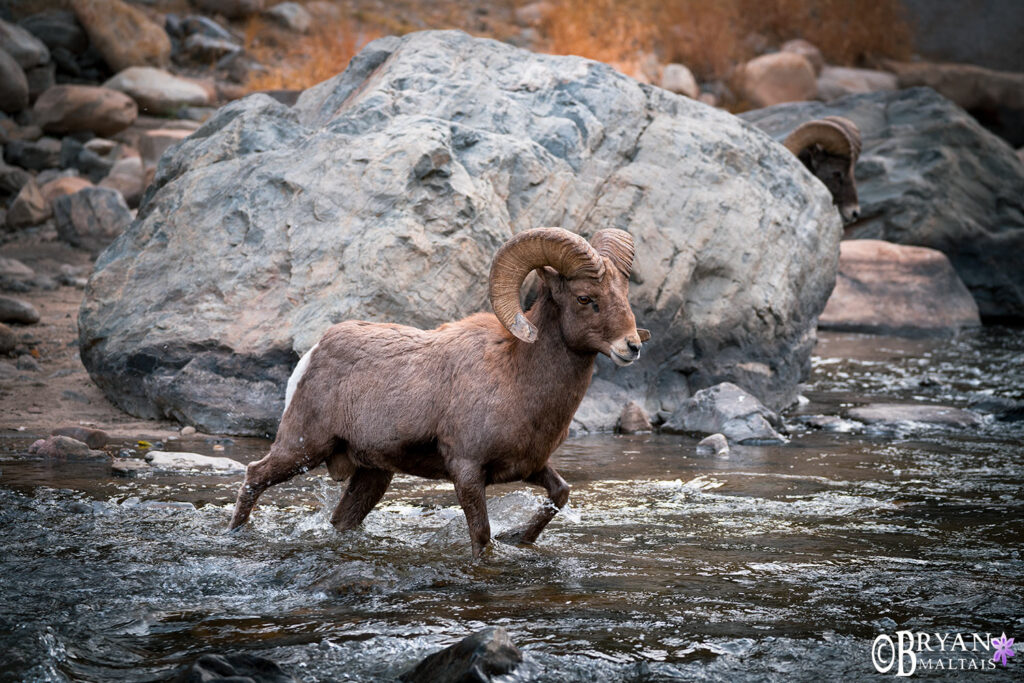 I photographed this Ram under the diffused light of an overcast sky. This type of light broadcasts light evenly across the entire scene with no shadows to obscure any part of the animal’s body. How many Rams do you see in this photo?
I photographed this Ram under the diffused light of an overcast sky. This type of light broadcasts light evenly across the entire scene with no shadows to obscure any part of the animal’s body. How many Rams do you see in this photo?
Diffused light is a powerful tool in photography because it eliminates shadows and produces accurate color tones. Unlike the warm tones of golden hour or white mid-day light, diffused light allows the true colors of a composition to shine through. Diffused light evenly illuminates all parts of a scene, revealing rich detail that would otherwise be lost in shadows.
These qualities make diffused light particularly ideal for macro and wildlife photography, as it reveals the fine details on the subject’s surface that would be obscured by the harsh shadows and color casts of direct light. Landscape photography can also benefit from diffused light in the same ways, although an overcast sky lacking cloud structure may result in a drab composition. Thunderstorms are advantageous because they offer both diffused light and an exciting sky.
 I photographed this Masked Hunter outside on a twig. Diffused, overcast light without shadows was necessary to capture all of the intricate details on its exoskeleton
I photographed this Masked Hunter outside on a twig. Diffused, overcast light without shadows was necessary to capture all of the intricate details on its exoskeleton

